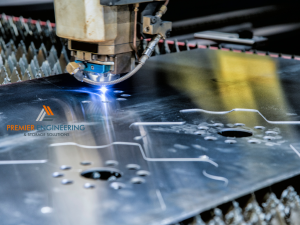 Modern CNC milling machines are amazing tools, capable of making prototypes and production parts quickly and reliably.
Modern CNC milling machines are amazing tools, capable of making prototypes and production parts quickly and reliably.
To do this they must be able to move along several axes of travel while maintaining dimensional accuracy.
Aluminum blank in vise preparing to be machined. Blank workpiece before rough milling mounted on a trammel head for five axes of travel. CNC methods are therefore branded by the number of axes along which they operate, with 3, 4, and 5-axis mills being the most common.
These movements determine the part features that can be made and affect production efficiency and accuracy. The more degrees of freedom available, the more complex the geometries that can be produced. To see if CNC machining is right for your next project, let’s explore the advantages and uses of these different types.
-
How Does A CNC cutting machine Move?
Clearly, we are not talking about the machine itself getting up and walking away. Rather we’re describing the movement of the cutting tool relative to the workpiece, which is what matters here.
-
What Is A 3-Axis Mill Used For?
We use 3-axis machines every day for a variety of milling operations. They’re great for fast and efficient material removal and making flat or planar surfaces. These geometrical shapes are called prismatic, basically rectilinear, as opposed to more organic shapes. Yes, a 3-axis mill can make rounded profiles, but it’s not ideally suited for this task.
3-axis mills are commonly used to drill and tap holes, but only along the Z-axis. That’s because the spindle moves up and down and cannot enter the workpiece from the side. This is a limitation for many parts that need holes or pockets machined on multiple faces, which the 3-axis machine cannot normally access.
Of course, this limitation can be overcome if the part is dismounted from the worktable and then repositioned. This is acceptable if there’s no other choice, but then the workpiece must be re-indexed. That means using touch probes to establish a new reference point before machining can be restarted.
This is a slow process, and it creates the very real possibility of creating dimensional errors. That’s why taking a part out of its fixture and repositioning it mid-way through a job is always to be avoided if possible.
A 3-axis mill can make circular features but only on the X/Y plane. Still, the relative simplicity of motion is fine for many projects that don’t require complexity and instead benefit from maximum part throughput and process efficiency.
-
What Are the Advantages of A 4-Axis CNC Mill?
Adding a 4th axis of motion opens many new machining possibilities. This is usually accomplished by adding rotary motion along the X-axis. Such an additional rotation along X is called the A axis. The rotary table lets the machinist mount apart on one end and then rotate it to access the remaining sides of the workpiece.
This avoids the problem of remounting and re-indexing as you would have on a 3-axis mill. Because the part is partially suspended – that is, not touching the surface of the worktable- it’s now possible to drill holes or other features that penetrate completely through a part.
Most significantly, the rotation of the workpiece, while it’s being machined, opens the possibility to make more complex curves and contours. A part can even be turned as if on a lathe, creating cylindrical and spherical profiles. However, the 4-axis mill is not optimized for this type of operation and so it will be slower than if on a dedicated lathe.







